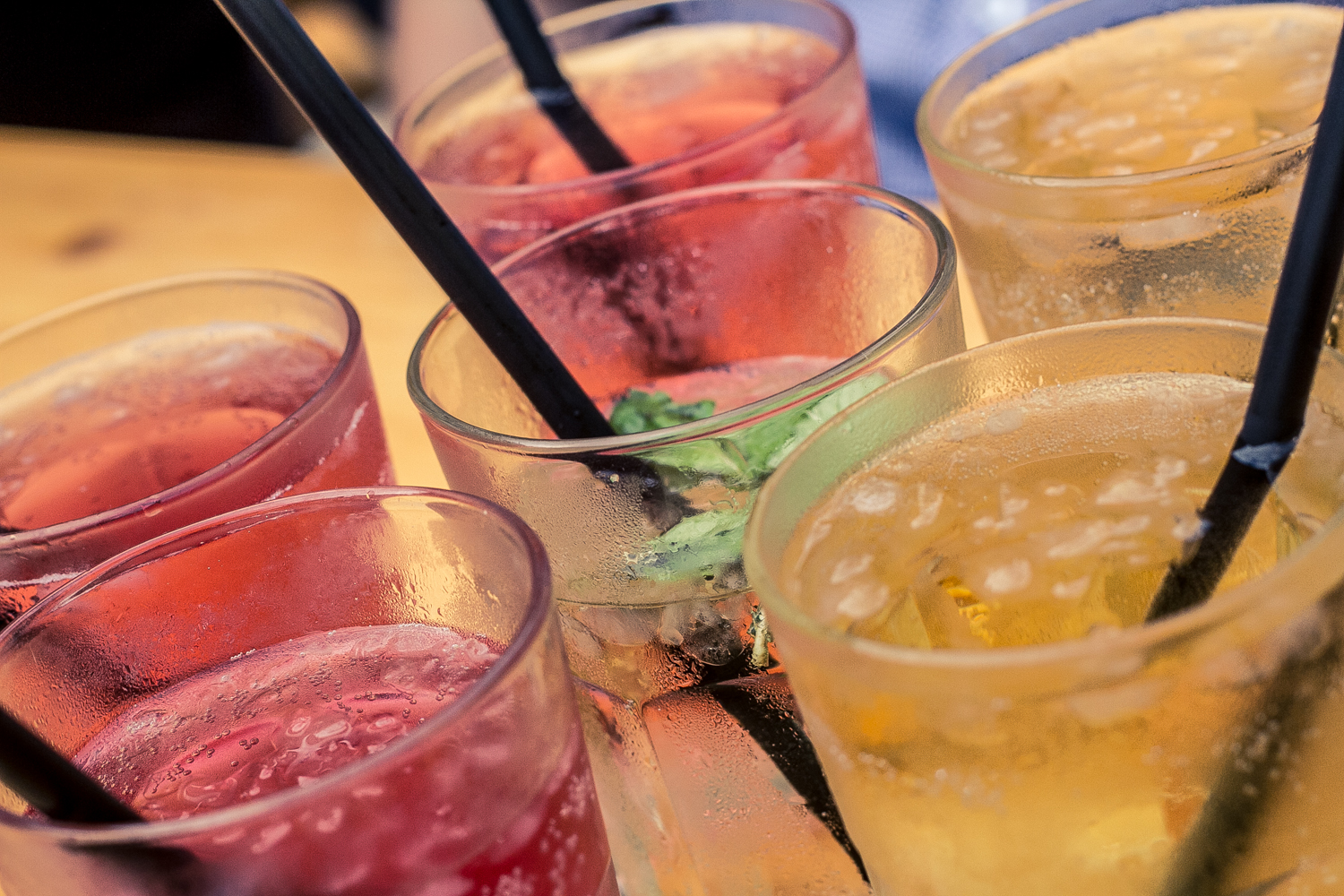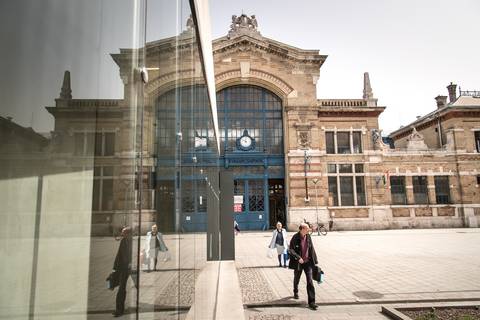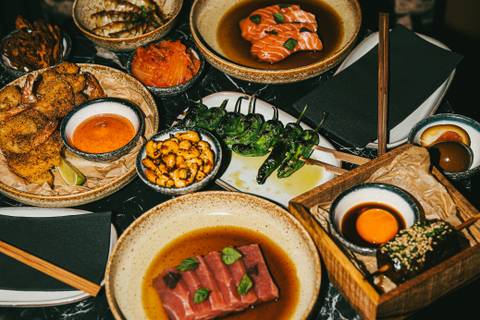A sip of fröccs is a sensational experience – the bubbly soda water intertwined with fruity wine makes a splash across the tongue in a flavorful explosion of cool delight. For Hungarians, drinking fröccs is the preferred method of chilling out during summertime, but with the year’s balmiest days now coming to a close, we lament the loss of this intoxicating treat among our usual tippling repertoire – can’t we continue enjoying this light liquid refreshment all year long? We look at the culture of fröccs in Hungary, and leave it to the reader to decide if autumn’s arrival is any reason to stop ordering these creatively customized wine spritzers.
It’s absolutely appropriate that spritzers are revered here in Hungary, thanks to several twists of history – the brilliant Magyar inventor Ányos Jedlik (creator of the world’s first electric motor) was not the originator of carbonated water, but in the 1820s he was the first to devise a way to create soda on an industrial scale; his adopted hometown of Győr honors this achievement with a fountain dedicated to him featuring a giant soda-bottle statue. According to this legend, Jedlik poured the first fröccs (roughly pronounced “fruutch”) in 1842 amid the company of outstanding Magyar poet Mihály Vörösmarty, who coined the drink’s Hungarian name. Finally, over 100 years later, as Hungary’s communist regime dawned in the late 1940s, the ordinarily impressive quality of Hungarian wine immediately began diminishing to the point where glassfuls were almost undrinkable unless they were cut with generous portions of soda water – and thus, even after the quality of Hungary’s wine improved again after the Soviet era ended, the popularity of fröccs spread and never fizzled out.
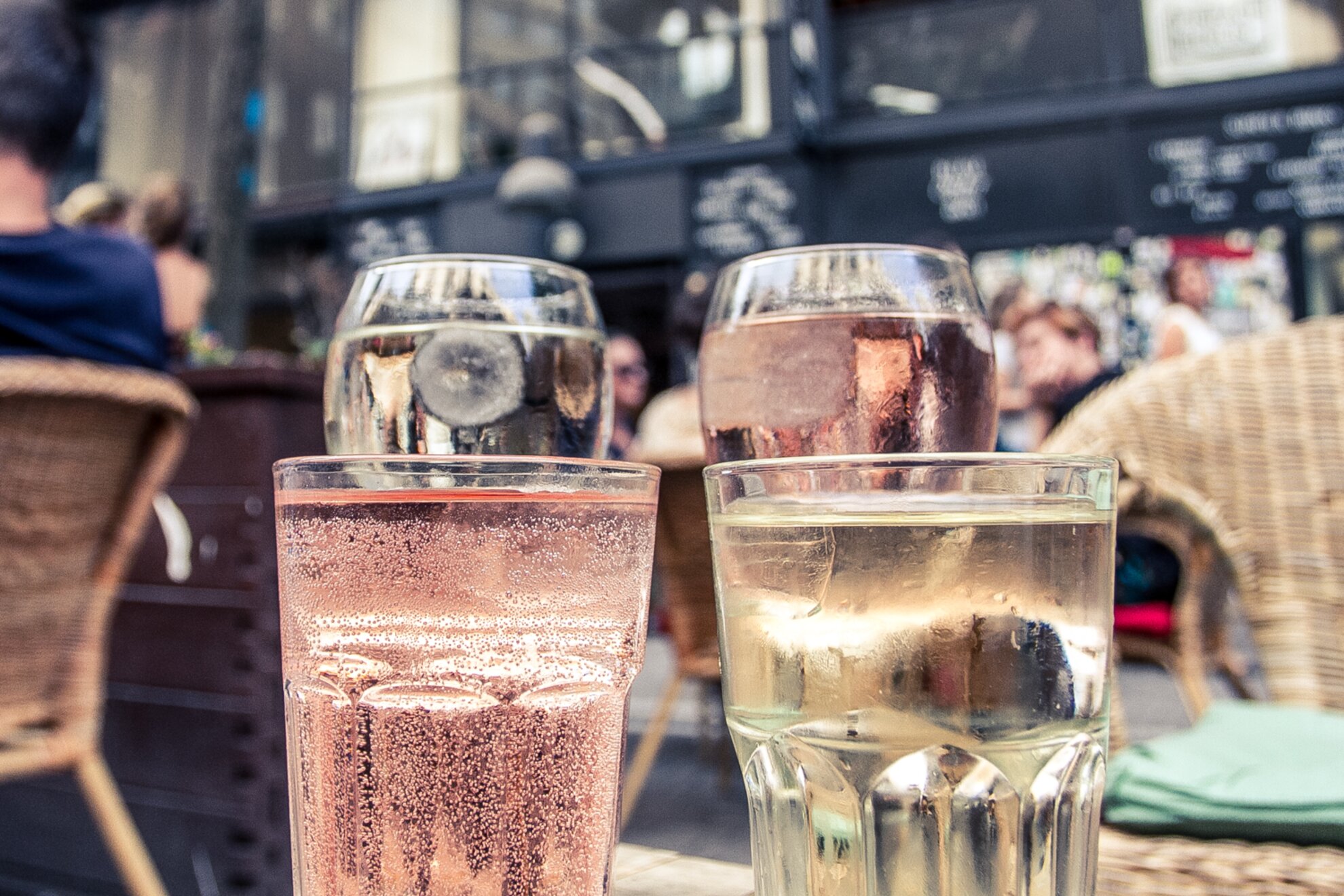
Over time, the preparation of fröccs developed into something of a science – depending on each drinker’s personal preferences, different proportions of wine (usually dry white or rosé) and soda water are mixed to offer greater strength or weakness, all depending on the desired effect. Concocted with these changeable deciliter ratios, the varying types of fröccs are each given often-humorous titles based on their composition – the most common varieties are kisfröccs (“small fröccs” – 1 dl wine, 1 dl soda) and nagyfröccs (“big fröccs” – 2 dl wine, 1 dl soda), but other popular versions include the házmester (“caretaker” – 3 dl wine, 2 dl soda) and the viceházmester (“reverse caretaker” – 2 dl wine, 3 dl soda), while someone with a powerful thirst may want a polgármester (“mayor” – 6 dl wine, 4 dl soda).
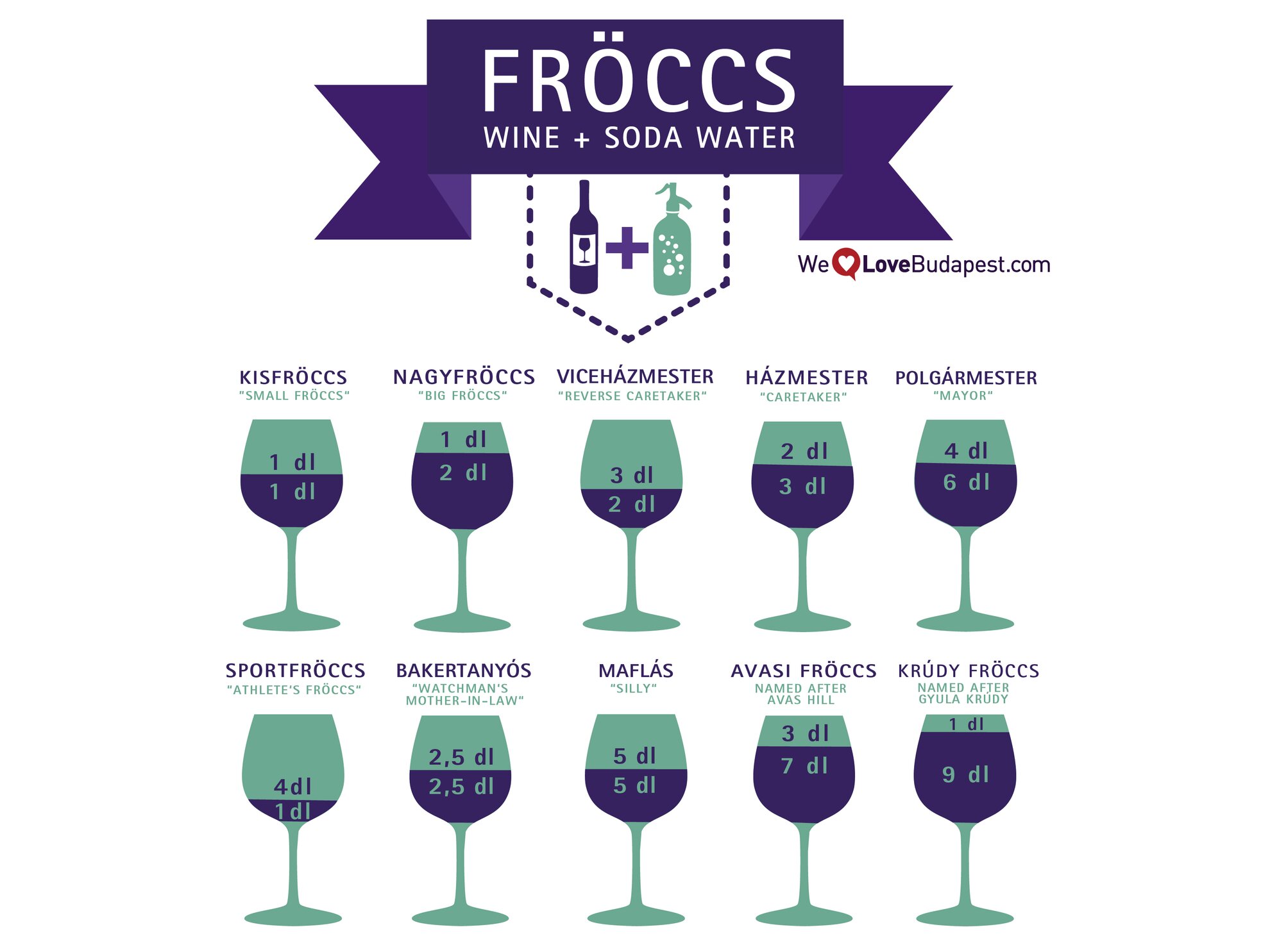
More creatively titled fröccs types include the sportfröccs (“athlete’s fröccs” – 1 dl wine, 4 dl soda), the bakertanyós (“watchman’s mother-in-law” – 2.5 dl wine, 2.5 dl soda), the maflás (“silly” – 5 dl wine, 5 dl soda), the Avasi fröccs (named after a hill near Miskolc dotted with wine cellars – 7 dl wine, 3 dl soda), and the rarely ordered Krúdy fröccs (named after bibulous Magyar writer Gyula Krúdy – 9 dl wine, 1 dl soda). Many other officially named fröccs concoctions exist, although regrettably most bartenders in Budapest know few of them beyond kisfröccs, nagyfröccs, házmester, viceházmester, and sportfröccs (catering to all of Hungary’s heavy-drinking Olympic aspirants).

Aside from its refreshing qualities, the great thing about fröccs is the amount of control it gives to the imbiber over the course of an evening (or even a day) – perhaps you want to get a solid buzz moments after arriving at a party, but then gradually sober up to avoid a hangover? Start with a házmester, move on to a viceházmester, and then finish off the evening with a sportfröccs or two, and you’ll feel (pretty much) fine the next morning. Doing some garden work in the hot sun throughout the afternoon? Ease the burden with an alternating succession of sportfröccs and nagyfröccs glassfuls, finishing the day’s labors with a celebratory pitcher of polgármester fröccs… and so on and so forth, with the different drinks each being a perfect fit for whatever situation awaits.
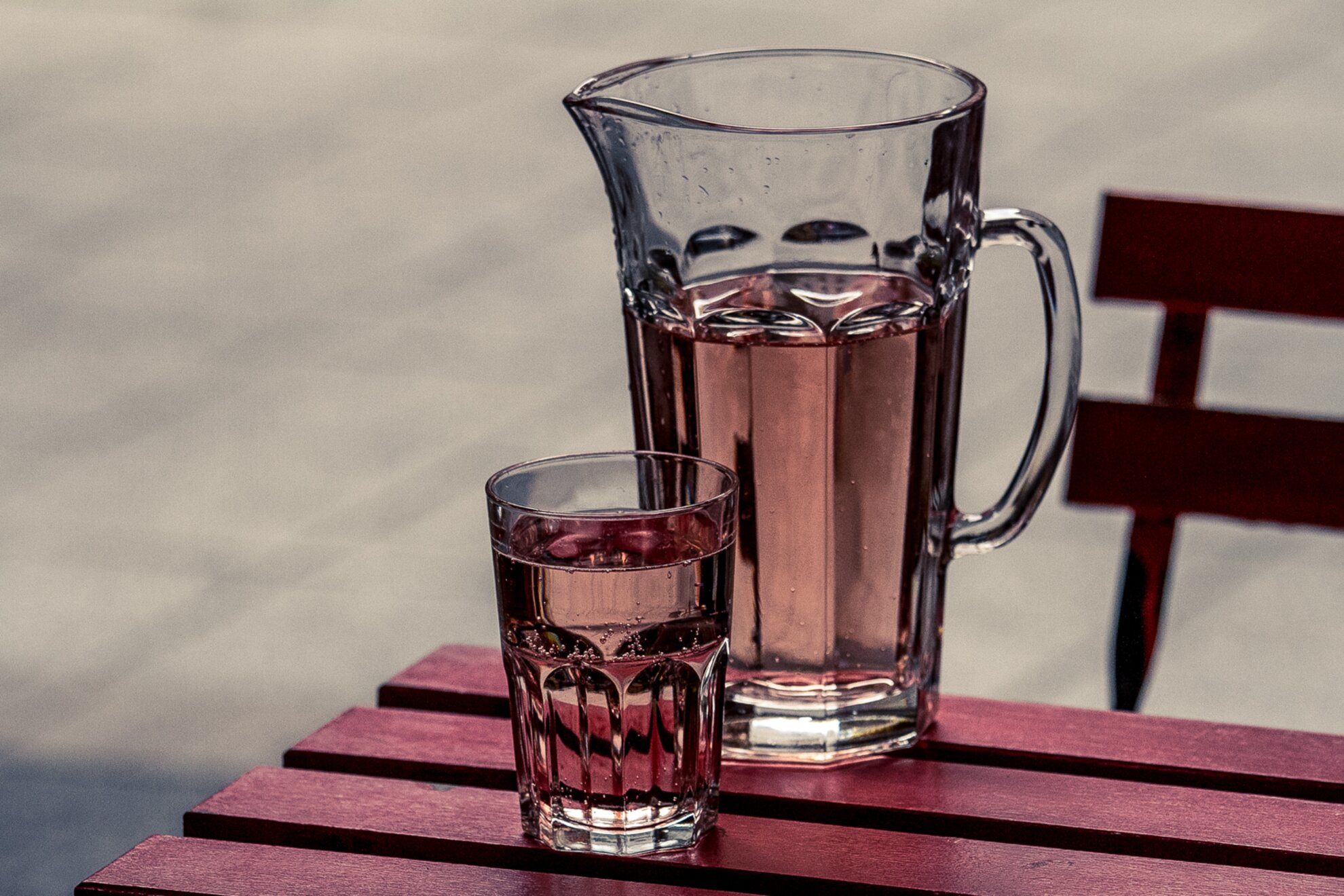
While most bartenders around Budapest don’t have the more obscure fröccs varieties memorized, several popular watering holes make a point of offering fröccs specialties, including some that are flavored with syrups like lavender and elderflower (macifröccs) – these include Fröccsterasz, Palack Wine Bar, Szatyor, Kandalló, and Drop Shop. Otherwise, most bars and restaurants in Budapest are happy to pour basic fröccs varieties anytime, but be careful about ordering fröccs at more high-end places, especially if they specialize in pouring high-caliber wines – some proprietors are outright offended by the prospect of diluting the taste of their good libations with soda water.

However, as summertime wanes into the colder months and mulled wine becomes the de rigueur drink for debauches, more and more fröccs fans will receive funny looks if they order this beloved beverage around Budapest – and we say, why? If cold beer can be savored even during the freezing depths of winter, why not a stiff fröccs? It also seems that a whole world of hearty new mixes can be explored in the uncharted realm of red-wine fröccs, a combination that is considered taboo by most bartenders, for reasons that escape us – we have experimented with this from time to time and were generally not disappointed.

So before summertime’s last blasts conclude and we begin the long descent into winter, let’s raise a glass to fröccs and pledge not to leave it behind with the change of seasons – fröccs always gives our spirits a burst of effervescence, and there is no reason we should abandon this bubbly euphoria for most of the year just because the weather becomes as crisp as a professionally poured viceházmester.
